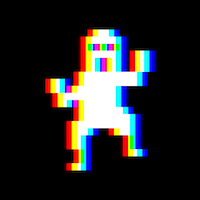Why YSK: TV has lied to you. If a cardiac arrest happens and you have an AED defibrillator at hand you might still need to do chest compressions.
- When you open up the AED there will be instructions on how to apply the electrodes as well as any other procedure needed to get started.
- The machine will first analyze the heart’s rhythm to find out if a shock can restore the heart.
- If the machine doesn’t find anything it will instruct you to perform CPR. After a while it will then instruct you to stand by as it does another analysis.
- It will once again either deliver a shock or instruct you to go back to CPR. Do this routine indefinitely until medical services has arrived. You will be tired. Switch out with another person if there are other people who can help.
- Some AED’s are automatic and will warn you to stand back and deliver a shock. Others will need you to press a button to deliver the shock yourself. Make sure not to touch the person as the machine delivers the shock.
Ah, ha, ha, ha, stayin’ alive, stayin’ alive
One thing to add, that haven’t been thought to me in the CPR course.
It’s fucking exhausting and you will get tired very soon. The training dummy doesn’t require nowhere near as much force as a real person. To give you an example, it’s quite common to crack or break a rib of the CPR recipient even if CPR is done right. That’s how much force you have to use. Without the required force, your pushes won’t reach the heart.
Make sure there is someone else who knows how to do CPR or at least is looking how you’re doing it and can repeat that or follow your commands once you switch.
I’ve only had to give someone CPR once and I haven’t been as tired in my whole life. No way the “I’ve been giving him CPR for 30 minutes…” You see on a TV screen is real. I felt like I’ll need CPR myself after 3 minutes.
Dixit my CPR trainer:" He’s already dead. You can’t kill him more."
“challenge accepted”
It’s concerning how there is no AED/CPR training in school considering everyone is likely to run into a situation where a family member will need resuscitation while waiting for an ambulance. Not knowing when and how to do cpr, how to use a defibrillator (portable ones give audio instructions) etc is so dangerous because by the time an ambulance gets there it may be too late. Also I wish AED were more readily available and easily located. May even be a good idea to pitch in with neighbors and make a locked box that’s easily accessible.
Here, in the Netherlands, we have a network of civilian first responders, with people that will be alarmed by the 112 (for you Americans: that’s the European version of 911) call center when a CPR request is near them. Also, we have a practical full cover over the country of AEDs. We have one against our front wall, accessible for everyone. In 1.5 years of time, I got two times a call that I was able to respond to, but our emergency services were already present when I arrived (by bike) on the location.
It’s like we’re redoing the basics of reddit. :)
We do not use 10 percent of our brains.
(This is jest, not complaining)
True true. I think I see it like this good old xkcd.
I’ve heard this before and looked it up, but I found this article from the NIH that contradicts what you’re saying.
Defibrillators are devices that send an electric pulse or shock to the heart to restore a normal heartbeat. They are used to prevent or correct an arrhythmia, an uneven heartbeat that is too slow or too fast. If the heart suddenly stops, defibrillators can also help it beat again.
There are certain devices that do do that, but it’s not a defibrillator. A defibrillator will stop/prevent an arrhythmia by stopping the heart, and letting it restart on its own (hoping that it goes to a normal rhythm), and delivering further shocks if it gets back into one.
The device you’re looking for to help a heart beat again would be a pacer, or a pacemaker, which will shock the heart to force it to pump, and restore rhythm that way. They’re commonly used for conditions like heart failure, if the heartbeat generation systems/internal pacemaker can’t generate a heartbeat quickly enough to sustain life.





